Why pickles are empty inside and how to make the right cut to prevent this problem
Russian cuisine is distinguished by a wide variety of all kinds of pickles, but cucumbers occupy a special place among them. In an ideal preparation, they should be crispy and strong, but it happens that the hostess and her guests will be disappointed - an outwardly appetizing vegetable turns out to be hollow inside.
In the article, we will answer the question: why are pickles empty inside, and give recommendations on how to avoid this when canning.
The content of the article
Reasons for the emptiness inside pickles
The main reason why voids form inside a cucumber, Is a rupture of the tissues of the seminal chamber under the pressure of gases. These cavities can be present in the still fresh vegetable or appear during fermentation.
Simply put, two options are possible:
- the fruit was salted already hollow;
- he became so after salting.
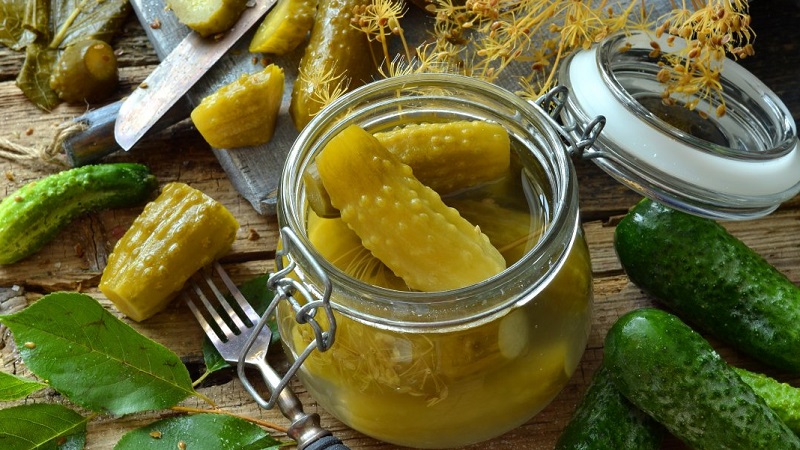
Among the factors leading to ruptures:
- violation of agricultural practices during cultivation: improper watering, excessive or insufficient feeding;
- mistakes in storage of crops and canned products;
- slow cooking with the release of a large number of gases;
- overripe fruits.
Storage errors
Often improper storage leads to the formation of voids inside the pickle pickles.
Highlight the following errors:
- Temperature conditions. When storing pickles in uncooled rooms, the air content in vegetables increases, a partial breakdown of proteins and a more rapid aging of tissues occurs, which significantly worsens their structure, including provoking the appearance of cavities.
- Storage duration. The longer the period, the more significant the destruction of lactic acid. This does not in the best way affect not only the consistency of the product, but also its taste.
- Loss of tightness. In this case, microorganisms enter the brine, which increase gas formation inside the cucumber.
The optimum storage temperature for pickled cucumbers in rolled jars is from -1 ° С to + 4 ° С at a humidity of 80–90%. In such conditions, homemade products have a shelf life of 8-9 months. If the container has been opened, the contents must be consumed within a few days.
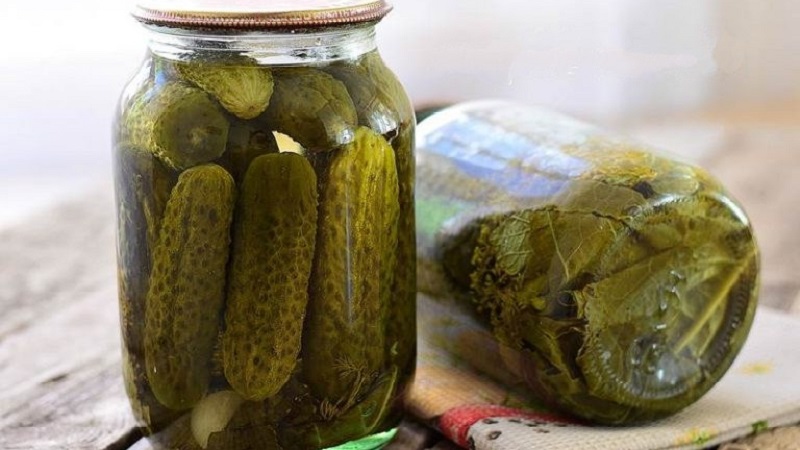
Storing pickled cucumbers in barrels for a long time is undesirable... It is difficult to achieve ideal tightness in such a container, in addition, brine often flows out of it. Topping up does not save the situation, since it cannot replenish the required amount of lactic acid and other organic substances.
Reference! You can improve the quality of barrel pickles by corking and tarring the tubs and keeping them buried in ice.
For a long shelf life, it is better to choose small fruits or gherkins, since they tolerate negative changes better than large ones.
Incorrect salting technology
The formation of voids inside cucumbers facilitated by the following actions:
- Salting not on harvest day. After 2-3 days, the picked cucumbers lose some of their moisture and wither. Later, when salted, they will be shriveled on the outside and hollow on the inside.
- Refusal to soak. Pre-soaking vegetables allows them to replenish some of the moisture they have lost. The more “lethargic” cucumbers are, the longer they should be kept in water.
- Large and small fruits in one salting container. The rate of sugar fermentation into lactic acid depends on their size, and in the future, the shelf life of pickles.
Attention! "Different sized" cucumbers have differences in chemical composition, pulp density, seed chamber size and air volume inside it.
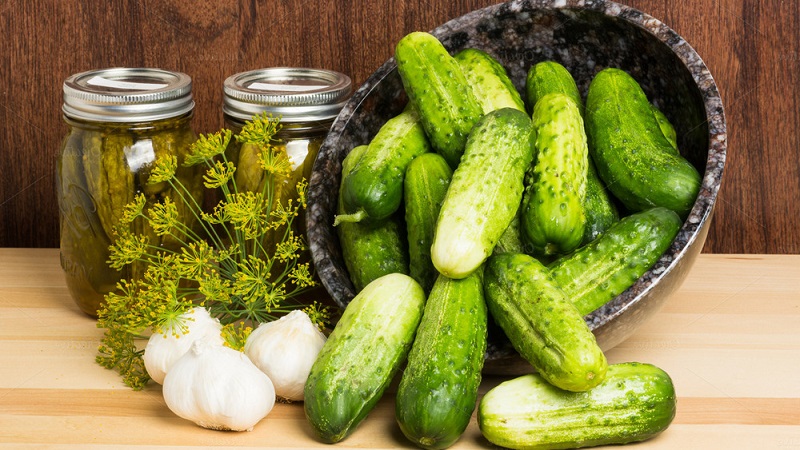
Shortcomings in the marinade
The key to delicious canned food is the right marinade... Failure to take into account the physics and chemistry of the salting process during its preparation increases the risk of error.
Reference! During fermentation, there is an increased release of cell sap into the brine (osmosis) and the absorption of salt from the brine by the fruit tissue (diffusion). The formation of voids is the result of dehydration of the cucumbers, i.e. imbalance between these processes.
Loose and hollow cucumbers are obtained if:
- For the brine, soft water is used. Cucumbers lose their firmness in soft environments. Sufficient density of canned vegetables is provided by brine on water with a hardness of 43-45 °.
- The brine strength is incorrectly calculated. The optimal salt concentration is considered to be 6-8%. If it is lower, air remains inside the seed chamber and fermentation occurs more slowly, if it is higher, the cucumbers lose moisture too much.
- Iodized salt is used. In brine, it acts as an antiseptic and prevents lactic acid fermentation. Slow fermentation is one of the causes of voids.
Important! In addition to the hardness of the water, take into account the hardness of the salt: the lowest is for extra salt, the highest is for the 2nd grade. The total hardness of the brine is derived from these two values. Ideally, it should be between 60-75 °.
Bad cucumbers
Even if the recommended storage conditions were observed, the technology of salting and a high-quality marinade was prepared, "wrong", ie. poorly selected cucumbers, may be hollow inside.
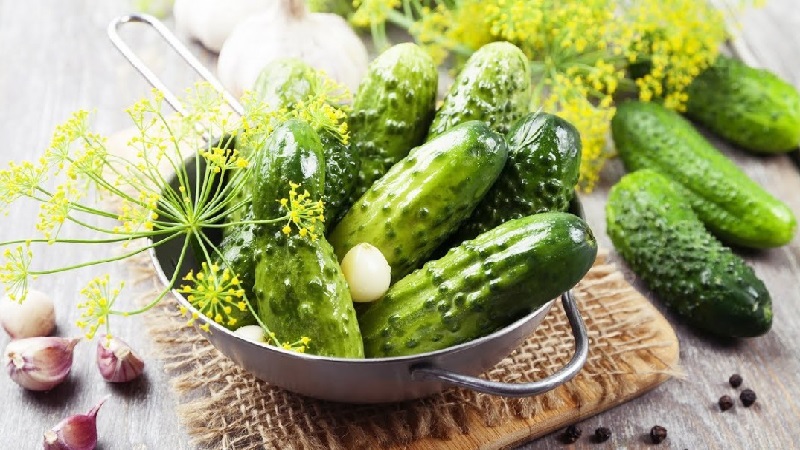
Often this happens for the following reasons:
- Overripe or too large specimens. The larger the seed chamber, the more air in it and the more likely the formation of voids.
- Cucumbers harvested on hot days. When the temperature rises, the vegetable rapidly loses moisture. When salting, this is fraught with the appearance of voids.
- Salting salad cucumbers. They have smooth skin and white thorns and are not suitable for canning. Lumpy, pimply varieties are preferable, since their surface area is greater, and, therefore, diffusion proceeds faster.
Reference! At the peak of fruiting, the cucumber crop is harvested every morning, preferably after dew or after rain. At the same time, the greenest, strongest and youngest specimens are selected.
Growing errors
From a botanical point of view, voids in cucumbers - a consequence of impaired development of the fruit placentawhere the seed buds are located. The root of evil most often lies in improper agricultural practices and, less often, in viral diseases of the culture.
Dehydration leads to the formation of hollow cucumbers... The explanation is simple: cucumbers are 90-95% water, if there is no water, a void is formed. At the same time, outwardly, thanks to the dense peel, the fruits can look great.
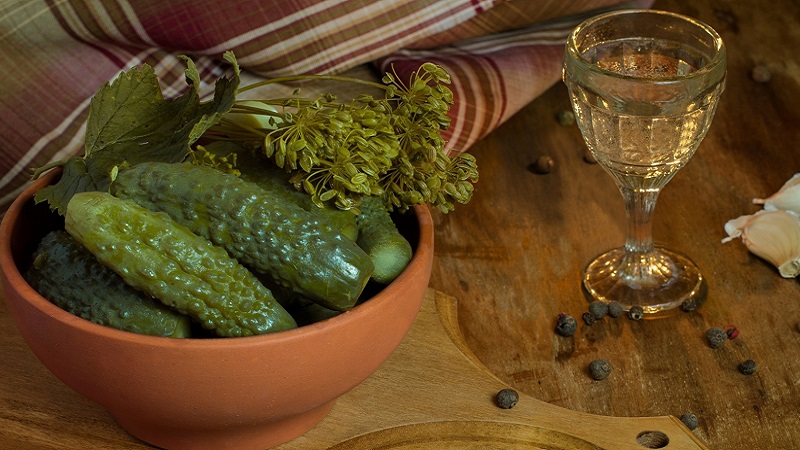
Causes of dehydration:
- insufficient irrigation;
- abundant watering after an extended period of drought;
- poor sandy soils that do not retain moisture well;
- salt imbalance of the soil due to a lack of mineral fertilizers - potassium, phosphorus, calcium and others - and an excess of nitrogen in the ammonium form;
- hot, dry air;
- large range of night and daytime temperatures;
- untimely harvest - when overripe, fruits begin to draw moisture from their own resources.
Solve problems following simple rules will help:
- Nitrogen fertilizers used only at an early stage of plant development - for the formation of the root system and the growth of green mass.
- In the flowering and ovary phase, the fruits need complex mineral fertilizers - potassium, calcium, phosphorus, magnesium, iron and others.
- Watering should have been regular. Soil moisture should not drop below 75%.
- Drying out of the topsoil can be avoided by adding a 15 cm layer of mulch under the bushes.
- To maintain an optimal temperature at night, cucumber beds are insulated with a covering material.
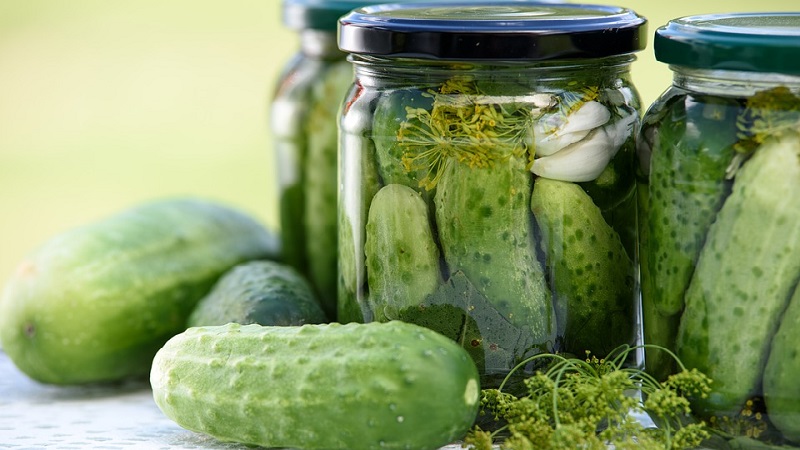
Unsuitable variety
Choosing the right variety of cucumbers for pickling includes these criteria:
- According to the intended use, the varieties are divided into three groups: salad, universal and canning. Less often than others, canned cucumbers are hollow, more often salad cucumbers for greenhouse cultivation.
- Cucumbers for canning are divided, depending on their size, into pickles (3-5 cm), gherkins of the first group (7-9 cm) and the second group (no more than 12 cm).
- According to the ripening time, early ripening, mid-ripening and late-ripening varieties are distinguished. If there is a short summer cottage season, the choice in favor of early maturing species is obvious. On the other hand, such hybrids bear fruit with hollow cucumbers by autumn. The reaction to cold and shortened daylight affects.
- Exist parthenocarpic hybrids capable of producing fruit without pollination. Such cucumbers contain practically no seeds or their seeds are small and underdeveloped. Consequently, no rupture of the seed box and no voids occur.
The most popular varieties and hybrids:
- Pikuli: F1 Son of the Regiment, F1 Filippok, F1 White Angel, F1 Moth, Sweet crunch, F1 Marinade.
- Gherkins: Parisian gherkin, F1 Everyone's envy, Firestarter, F1 Lilliputian, F1 Caesar, F1 Granddaughter, F1 Capricorn.
- Parthenocarpic: F1 Boy with thumb, F1 Petrel, F1 Anyuta, F1 Herman, F1 Marcella, F1 Real owner, etc.

How to salt cucumbers correctly to avoid emptiness inside
So that pickles are not empty inside, you need to salt them correctly.
Experts suggest the following algorithm of actions:
- Choose young, green and strong fruits. It's okay if they are not fully ripe, but overripe specimens will not work.
- Wash and soak the cucumbers in cold water for 3-6 hours. After soaking, they should look swollen and elastic.
- Sort vegetables by size before salting.
- For homemade products, a container with a volume of no more than 10 liters is recommended. It is pre-washed with soda and sterilized in boiling water.
- Dense vertical stacking of cucumbers is preferred. Spices are placed on the bottom of the container and between the rows of vegetables. Classic set: peppercorns, cloves of garlic, dill umbrellas, horseradish leaves, black currant and cherry.
- To obtain 6% brine, 60 g of salt (2 tbsp) are dissolved in 1 liter of boiling water.
- With the hot method, cucumbers are poured with brine at room temperature and left for a week. Then the resulting foam is removed, the brine is drained and re-boiled, and the cucumbers are washed with cold water. After a new "filling", the cans are rolled up or closed with dense polyethylene lids.
- The cold method differs in that the brine is boiled only at the stage of preparation, and after the end of fermentation (after 4-5 days), it is added in the volume that the cucumbers have absorbed.
Reference! Special attention is paid to spices, as they not only improve the taste of pickles, but also balance the enzymatic process, inhibit the processes of putrefactive decomposition of substances and extend the shelf life of the finished product. However, the total weight of the spices should not exceed 5% of the weight of the cucumbers.
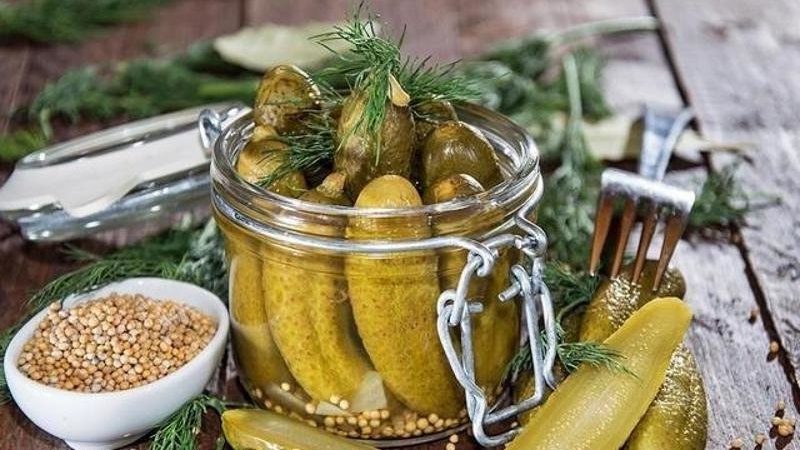
Tips from experienced housewives
Supplement scientific calculations advice from "kitchen practitioners", proven over the years:
- Even hollow cucumbers can be salted by soaking them in salted water. This "rehearsal" will speed up the fruit drink: the tissues will absorb the salt, and it will keep the moisture inside the cucumber.
- A cold bath with ice will help to "bring to life" not quite fresh and soft cucumbers. Vegetables will become dense and crispy, and will not lose their shape during salting.
- You can reduce the risk of cavities in pickles by piercing each fruit.
- For the brine, it is better to choose clean well or spring water. Hard tap water can be defended, but not filtered!
- Rock salt has proven itself well in home blanks.The trendy Himalayan, iodized or seafood is best left for other dishes.
- If barrels are used for salting, oak or alder are preferable. These types of wood do not absorb brine, do not rot and give the cucumbers a pleasant aroma.
It can be useful:
How to store pickles in an apartment
Conclusion
Many factors affect the formation of voids inside a cucumber. Fresh fruits become hollow due to dehydration as a result of errors in agricultural technology and care. This can be avoided by observing the optimum soil moisture and its salt balance. It is also best to choose hybrids with small seed chambers.
Pre-soaking cucumbers, accurate calculation of the strength and hardness of the brine, and proper storage of pickles will help prevent tissue rupture during fermentation.